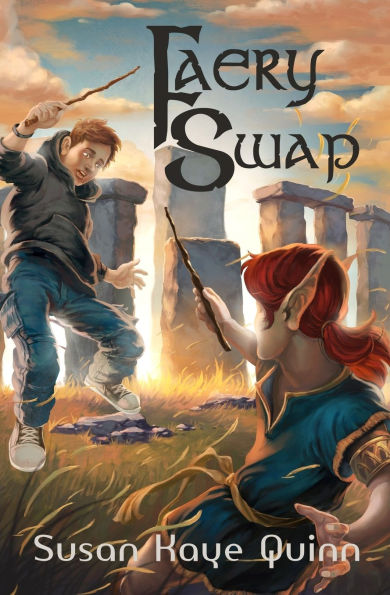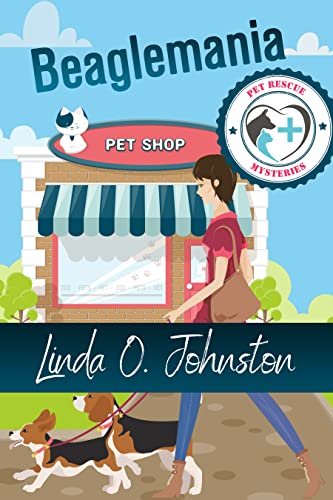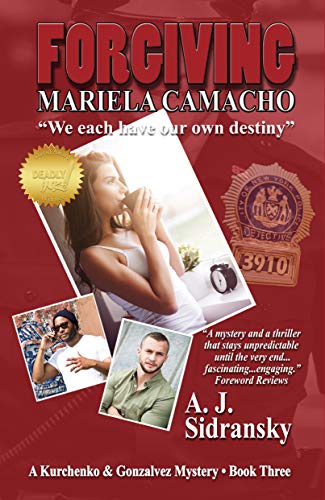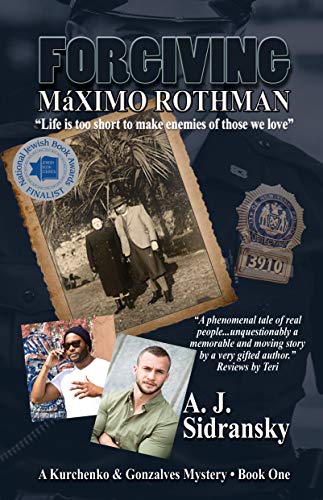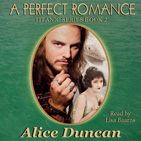Vintage 1950s Holiday Music
December 3, 2018 by Janet Elizabeth Lynn and Will Zeilinger in category Partners in Crime by Janet Elizabeth Lynn & Will Zeilinger tagged as Christmas Music, Holiday Music, memory lane, rock-and-roll, Vintage 1950sVintage 1950s Holiday Music
by
Janet Elizabeth Lynn
I thought it would be nice to listen to some of the music that we still hear during the Christmas Holidays. I’ve included the links for your “waltz down memory lane”. Here are the top ten Christmas hits in the1950s.
(In chronological order of release)
 (There’s No Place Like) Home for the Holidays
(There’s No Place Like) Home for the Holidays
Home for the Holidays was written by Al Stillman and Robert Allen. It was a hit in 1955, but has also been recorded by numerous other artists. Listen on YouTube
 I Heard the Bells on Christmas Day
I Heard the Bells on Christmas Day
In 1956, Bing Crosby’s version was released as a single. Longfellow’s poem resulted when his personal peace was shaken. His second wife of 18 years was tragically burned in a fire, leaving him a widower of six children. Soon after, Longfellow’s oldest son, Charles Appleton Longfellow, joined the Union Army, he was severely wounded in the battle. He wrote the poem December,1863. The lyrics were by Johnny Marks and John Baptiste Calkin. Listen on YouTube
 Nuttin’ for Christmas
Nuttin’ for Christmas
Also known as “Nothing for Christmas,” Nuttin’ for Christmas was a novelty Christmas song written by Sid Tepper and Roy C. Bennett. It became a hit during the 1955 Christmas season when it appeared in Billboard’s pop charts by five different artists. The highest-charting of the five recordings was released by Art Mooney and His Orchestra, with six-year-old Barry Gordon as lead vocalist. Listen on YouTube
 Mary’s Boy Child
Mary’s Boy Child
Mary’s Boy Child a 1956 Christmas song, written by Jester Hairston. It is widely performed as a Christmas carol. Harry Belafonte heard the song being performed by a choir and sought permission to record it. It was recorded for his album An Evening with Belafonte. Listen on YouTube
 Jingle Bell Rock
Jingle Bell Rock
The song was written and performed by Bobby Helms in 1957 and has received frequent airplay during every Christmas season since. The song has hit the Billboard charts a record six times since its original release. Listen on YouTube
 Blue Christmas
Blue Christmas
A Blue Christmas was written by Billy Hayes and Jay W. Johnson and most famously performed by Elvis Presley. Elvis Presley cemented the status of Blue Christmas as a rock-and-roll holiday classic by recording it for his 1957 LP Elvis’ Christmas Album. Listen on YouTube
 Run Rudolph Run
Run Rudolph Run
Run Rudolph Run was written by Johnny Marks and Marvin Brodie. The song was first recorded by Berry in 1958 released as a single. Listen on YouTube
 Rockin’ Around the Christmas Tree
Rockin’ Around the Christmas Tree
Written by Johnny Marks and recorded by Brenda Lee in 1958, Rocking Around the Christmas Tree was a rockabilly/rock-and-roll flavored Christmas tune. While it was ignored in its first two seasons, the song hit #16 on the Billboard pop chart during the Christmas season of 1960. Eight million copies were sold the first thirty years. Listen on YouTube
 The Chipmunk Song
The Chipmunk Song
The Chipmunk Song (Christmas Don’t Be Late) is a Christmas song written by Ross Bagdasarian Sr. (a.k.a. David Seville) in 1958. Bagdasarian sang and recorded the song, varying the tape speeds to produce high-pitched “chipmunk” voices for the chipmunks: Alvin, Simon, and Theodore. Listen on YouTube
 The Little Drummer Boy
The Little Drummer Boy
This song was originally called Carol of the Drums, a Czech folksong which Katherine Davis translated to English in 1941. When the Twentieth-Century Fox Records label contracted Simeone to make a Christmas album in 1958, he assembled a group he called The Harry Simeone Chorale and searched for recording material. Simeone changed the title to The Little Drummer Boy. Listen on YouTube
4 0 Read more
Perk Up! Ideas Float Through the Air
November 3, 2018 by Janet Elizabeth Lynn and Will Zeilinger in category Partners in Crime by Janet Elizabeth Lynn & Will Zeilinger tagged as ideas, inspiration, public
Perk Up!
Ideas Float Through the Air
Will Zeilinger
As authors, one of the most often asked questions Janet and I hear is, “Where do you get your ideas?”
 There are a myriad of answers. Inspiration is everywhere. We never know what may spark an idea for a scene, a section of dialog, a short story, or an entire novel. One of the many methods we employ, but don’t often tell when on stage or at a book signing is, “We eavesdrop.” Let me explain. The eavesdropping is not intentional. We may be out having dinner with friends and a conversation at a table next to us may be loud enough for us to hear.
There are a myriad of answers. Inspiration is everywhere. We never know what may spark an idea for a scene, a section of dialog, a short story, or an entire novel. One of the many methods we employ, but don’t often tell when on stage or at a book signing is, “We eavesdrop.” Let me explain. The eavesdropping is not intentional. We may be out having dinner with friends and a conversation at a table next to us may be loud enough for us to hear.
Standing in the checkout line at a big box store or supermarket is another. Snippets of conversations may drift past us and cause us to think…”That would fit perfectly in my story.” In this age of cell phones and in our daily travels, it is sometimes impossible to avoid overhearing private conversations. Some may think this rude, but if people are going to speak so loudly, it’s fair game.
Janet was at a buffet and overheard the parent say, “Son. If you’re going to take all that food you have to eat everything on your plate. If you don’t eat it all, you’ll have to sit and look at it.”

Even while on vacation, our “writer brains” won’t turn off. Several years ago we were on a trip to China. We overheard one of our tour members ask another while at lunch, “Don’t you think these people would get tired of Chinese food all the time?” The comment was not meant to be insensitive, but it was funny. We love to hear stories from people we meet while traveling. and we’ve used many excerpts from things we’ve heard.
We have heard random bits of conversations people don’t think others can hear. Will was standing in the customer service line at a home improvement store when he overhead to guys complaining about the small size of his imported car’s trunk. The guy said something like, “You couldn’t even stuff a dead guy in there if you had to.” Will used part of that in his book THE FINAL CHECKPOINT. In this mystery a headless corpse was found in the trunk of an abandoned sports car. The head was dumped somewhere else because it wouldn’t fit.
 Overhearing conversations is only one way of getting inspiration. People-watching at malls and airports are another way to get inspired. Everyone has something going on in their lives and as fiction writers, we can dream up plots from our imagination. In the course of hearing things the often warm our hearts, sometime they break our hearts and other times they are so funny that we have to bite our lip to keep from laughing out loud. Janet and I often look at each other, shake our heads and think, “You can’t make this stuff up.”
Overhearing conversations is only one way of getting inspiration. People-watching at malls and airports are another way to get inspired. Everyone has something going on in their lives and as fiction writers, we can dream up plots from our imagination. In the course of hearing things the often warm our hearts, sometime they break our hearts and other times they are so funny that we have to bite our lip to keep from laughing out loud. Janet and I often look at each other, shake our heads and think, “You can’t make this stuff up.”
1950s COMIC BOOKS – CONSPIRACY OR SCARE? by Will Zeilinger
October 3, 2018 by Janet Elizabeth Lynn and Will Zeilinger in category Partners in Crime by Janet Elizabeth Lynn & Will Zeilinger tagged as 1950s, comics, Congress, Partners in Crime
1950s COMIC BOOKS – CONSPIRACY OR SCARE?
Many of us in the “Baby Boom” generation remember collecting soda pop bottles and turning them in for a few cents each or saving our allowance to buy one of our favorite comic books for a dime. In the 1950s it could be anything from Archie, Superman and Lois Lane, or Blackhawk, to Tales from the Crypt or G.I. Joe. We would sneak off somewhere and devour the latest adventures of our choice.
The truth is we had our noses in comic books like young people of today have their eyes and thumbs glued to their electronic devices.

According to historian Michael A. Amundson, there was an altruistic rationale for some comic books. Familiar comic book characters helped ease young readers’ fear of nuclear war and neutralize anxiety about the questions posed by atomic power. For example, characters from the Blondie comic strip were used in the Educational Comic (EC) book Dagwood Splits the Atom. It was also during this period that long-running humor comics debuted, including EC’s Mad comics and Carl Barks’ Uncle Scrooge in Dell’s Four Color Comics (both in 1952).
Little did we know something more sinister was brewing to which most of us were totally oblivious.

Congress Gets Involved
In 1953, the comic book industry hit a major setback when the United States Senate Subcommittee on Juvenile Delinquency was created in order to investigate the problem of juvenile delinquency. This was a publicity thing to satisfy the passions of the do-gooders.
Estes Kefauver, who had run for the Presidency in 1952, and held hearings on organized crime a few years before, extended the reach of his committee and met in New York City to investigate comic books. They had several people testify.
This was followed by the publication of Fredric Wertham’s Seduction of the Innocent the following year (that claimed comics sparked illegal behavior among minors) comic book publishers were subpoenaed to testify in public hearings. As a result, the Comics Code Authority was created by the Association of Comics Magazine Publishers to enact self-censorship by comic book publishers.
Seal of Approval
 The word quickly spread about what the new standards would be. In fact, this served the interests of concerned parent groups, who were active locally. That would be where the real action happened—not from the top, but from the pressure of people on the stores, on the distributors, from churches and PTAs and others. For example, kids were encouraged to trade in (“swap”) “bad” comics for “good comics.”
The word quickly spread about what the new standards would be. In fact, this served the interests of concerned parent groups, who were active locally. That would be where the real action happened—not from the top, but from the pressure of people on the stores, on the distributors, from churches and PTAs and others. For example, kids were encouraged to trade in (“swap”) “bad” comics for “good comics.”
Other communities collected comics and burned them! Trashed them! Some kids tried to protest, saying this was like the Nazi book burnings, but folks didn’t believe them. The main result, though, was the production of a new “Comics Code.”
For most kids of that era, comic books would still be bought, traded and read. The political winds of Washington would have little effect on them.
0 0 Read morePartnering at Book Events: The Two in One Challenge by Janet Elizabeth Lynn
September 3, 2018 by Janet Elizabeth Lynn and Will Zeilinger in category Partners in Crime by Janet Elizabeth Lynn & Will Zeilinger tagged as autographing, book signing, bookevents, partners, Talks
My husband, Will Zeilinger, and I co-write the Skylar Drake Murder Mysteries. A hardboiled series that takes the reader to 1950s Los Angeles and other areas of the west. Our new book, Slick Deal, begins News Year’s Eve 1956 at the Hollywood Roosevelt Hotel. The first murder and clues lead to Avalon, Catalina.
 As authors, it is important to get out and meet readers, fellow writers and present your book to the world!! Thus we have a long line of public appearances we schedule each year. Since we present together (usually), the trick to present as one entity without tripping over each other. We refuse to play the “good cop, bad cop” routine so many writing couples do when giving talks. We choose to present ourselves as professionals, showing respect for each other and the profession of authorship. So here is how we work our appearances:
As authors, it is important to get out and meet readers, fellow writers and present your book to the world!! Thus we have a long line of public appearances we schedule each year. Since we present together (usually), the trick to present as one entity without tripping over each other. We refuse to play the “good cop, bad cop” routine so many writing couples do when giving talks. We choose to present ourselves as professionals, showing respect for each other and the profession of authorship. So here is how we work our appearances:
 Author Panels: Quite often we are asked to be part of a panel with other authors. The Moderator will send a list of questions to us or ask us to submit questions. Since we write together, we are treated as one entity. So instead of repeating each other, we take turns leading the answer to the question, then the other adds a few words. This keeps us from “dominating” the panel and staying on the topic.
Author Panels: Quite often we are asked to be part of a panel with other authors. The Moderator will send a list of questions to us or ask us to submit questions. Since we write together, we are treated as one entity. So instead of repeating each other, we take turns leading the answer to the question, then the other adds a few words. This keeps us from “dominating” the panel and staying on the topic.
Book Signing Events: We often appear with other authors while signing books and meeting readers. Rather than the two of us tripping over each other, we take turns finishing each other’s sentences. Most of it is off the cuff, and readers get a kick out of it. Again the important thing is not to dominate the event since the two of us is an entity of one.
Our Book Launches: This event is just the two of us. Since our series star, Skylar Drake, is a male detective, the reading is always done by Will. After all, it’s all out of a guy’s head. I summarize the novel and give a brief character study of Skylar Drake. Then we switch off with Q & A about the inevitable question, “How exactly do the two of you work this without killing each other?” We make sure the books for sale are pre-signed, so readers aren’t strapped with trying to run both of us down for signing. We will add a personal note if requested
As keynote speakers: Our presentation always starts off with a summary of the book, a reading by Will and the journey the book took from conception to print, and we always . . . I mean always, have two to three funny stories about our research or interviews. We finish by switching off responding to Q & A.
When partnering in writing both of you must present as one entity with two different takes on things. That is how the book is written, two different takes on plots, subplots, characters and conclusion resulting in the entity of one book.
The results of our research? SLIVERS OF GLASS, STRANGE MARKINGS, DESERT ICE and SLICK DEAL and coming next GAME TOWN …and yes, we’re still married.
 Website: www.janetlynnauthor.com
Website: www.janetlynnauthor.com
Blog: www.themarriedauthors.blogspot.com
2 0 Read moreVintage 1950s: The Joan Bennett Scandal by Janet Elizabeth Lynn
August 3, 2018 by Janet Elizabeth Lynn and Will Zeilinger in category Partners in Crime by Janet Elizabeth Lynn & Will Zeilinger tagged as hollywood scandals, research, the 1950s, writing
My husband, Will Zeilinger and I co-write the Skylar Drake Murder Mystery series, a hardboiled mystery series that takes the reader to 1950s Los Angeles and other areas of the west. Our new book, Slick Deal, begins News Year’s Eve 1956 at the Hollywood Roosevelt Hotel. The first murder and clues lead to Avalon, Catalina.
 During our research of the 1950s we come across mysteries and scandals in the newspapers. These give us ideas to include as background in our novels. One scandal stood out and we used in Slick Deal was the Joan Bennett Scandal. We modified the events to fit in our story.
During our research of the 1950s we come across mysteries and scandals in the newspapers. These give us ideas to include as background in our novels. One scandal stood out and we used in Slick Deal was the Joan Bennett Scandal. We modified the events to fit in our story.
Joan Bennett was a successful screen actress, represented by her long time agent Jennings Lang. On December 13, 1951 she and Lang met to talk over an upcoming TV show.
Bennett parked her Cadillac convertible in the lot across the street from the Beverly Hills Police Department. She and Lang drove off in his car.
 Her husband, Walter Wanger, drove by and noticed his wife’s car parked. Half an hour later, he again saw her car there and stopped to wait. Bennett and Lang drove into the parking lot a few hours later. Lang walked her to her car. As she started the engine, turned on the headlights and prepared to drive away. Wanger walked up and shot and the agent in a fit of jealousy
Her husband, Walter Wanger, drove by and noticed his wife’s car parked. Half an hour later, he again saw her car there and stopped to wait. Bennett and Lang drove into the parking lot a few hours later. Lang walked her to her car. As she started the engine, turned on the headlights and prepared to drive away. Wanger walked up and shot and the agent in a fit of jealousy
Bennett said she saw two vivid flashes, then Lang slumped to the ground. Wanger tossed the pistol into his wife’s car.
 The police, who had heard the shots, came to the scene and found the gun in Bennett’s car when they took Wanger into custody. Lang was taken to a hospital, where he recovered.
The police, who had heard the shots, came to the scene and found the gun in Bennett’s car when they took Wanger into custody. Lang was taken to a hospital, where he recovered.
Wanger said, “I shot him because I thought he was breaking up my home.” He was booked on suspicion of assault with intent to commit murder.
Bennett denied a romance. She blamed the trouble on financial setbacks involving film productions Wanger was involved with. She said he was on the verge of a nervous breakdown.
Wanger served a four-month sentence, then quickly returning to his career to make a series of successful films.
Meanwhile, Bennett went to Chicago to appear on the stage.
Bennett made only five movies in the decade that followed, as the shooting incident put a “stain” on her career and she became virtual

ly blacklisted.
In a 1981 interview, Bennett compared the judgmental 1950s with the sensation-crazed 1970s and 1980s. “It would never happen that way today,” she said, laughing. “If it happened today, I’d be a sensation. I’d be wanted by all studios for all pictures.”
Joan Bennett died of a heart attack on December 7, 1990 (at 80 years old).
The results of our research? SLIVERS OF GLASS, STRANGE MARKINGS, DESERT ICE and SLICK DEAL . . . and yes, we’re still married.
Website: www.janetlynnauthor.com
Blog: www.themarriedauthors.blogspot.com
2 1 Read moreAffiliate Links
A Slice of Orange is an affiliate with some of the booksellers listed on this website, including Barnes & Nobel, Books A Million, iBooks, Kobo, and Smashwords. This means A Slice of Orange may earn a small advertising fee from sales made through the links used on this website. There are reminders of these affiliate links on the pages for individual books.
Search A Slice of Orange
Find a Column
Archives
Featured Books
FAERY SWAP
Warrior faery princes can be very stubborn. Especially when they possess your body.
More info →BEAGLEMANIA
Lauren Vancouver is the head of HotRescues, a no-kill animal shelter north of Los Angeles, but it's often human nature that puts her in the path of danger.
More info →FORGIVING MAXIMO ROTHMAN
Life is too short to make enemies of those we love.
More info →A PERFECT ROMANCE
Side by side on the fateful night of the Titanic disaster . . .
More info →Newsletter
Contributing Authors
Search A Slice of Orange
Find a Column
Archives
Authors in the Bookstore
- A. E. Decker
- A. J. Scudiere
- A.J. Sidransky
- A.M. Roark
- Abby Collette
- Alanna Lucus
- Albert Marrin
- Alice Duncan
- Alina K. Field
- Alison Green Myers
- Andi Lawrencovna
- Andrew C Raiford
- Angela Pryce
- Aviva Vaughn
- Barbara Ankrum
- Bethlehem Writers Group, LLC
- Carol L. Wright
- Celeste Barclay
- Christina Alexandra
- Christopher D. Ochs
- Claire Davon
- Claire Naden
- Courtnee Turner Hoyle
- Courtney Annicchiarico
- D. Lieber
- Daniel V. Meier Jr.
- Debra Dixon
- Debra H. Goldstein
- Debra Holland
- Dee Ann Palmer
- Denise M. Colby
- Diane Benefiel
- Diane Sismour
- Dianna Sinovic
- DT Krippene
- E.B. Dawson
- Emilie Dallaire
- Emily Brightwell
- Emily PW Murphy
- Fae Rowen
- Faith L. Justice
- Frances Amati
- Geralyn Corcillo
- Glynnis Campbell
- Greg Jolley
- H. O. Charles
- Jaclyn Roché
- Jacqueline Diamond
- Janet Lynn and Will Zeilinger
- Jaya Mehta
- Jeannine Atkins
- Jeff Baird
- Jenna Barwin
- Jenne Kern
- Jennifer D. Bokal
- Jennifer Lyon
- Jerome W. McFadden
- Jill Piscitello
- Jina Bacarr
- Jo A. Hiestand
- Jodi Bogert
- Jolina Petersheim
- Jonathan Maberry
- Joy Allyson
- Judy Duarte
- Justin Murphy
- Justine Davis
- Kat Martin
- Kidd Wadsworth
- Kitty Bucholtz
- Kristy Tate
- Larry Deibert
- Larry Hamilton
- Laura Drake
- Laurie Stevens
- Leslie Knowles
- Li-Ying Lundquist
- Linda Carroll-Bradd
- Linda Lappin
- Linda McLaughlin
- Linda O. Johnston
- Lisa Preston
- Lolo Paige
- Loran Holt
- Lynette M. Burrows
- Lyssa Kay Adams
- Madeline Ash
- Margarita Engle
- Marguerite Quantaine
- Marianne H. Donley
- Mary Castillo
- Maureen Klovers
- Megan Haskell
- Melanie Waterbury
- Melisa Rivero
- Melissa Chambers
- Melodie Winawer
- Meriam Wilhelm
- Mikel J. Wilson
- Mindy Neff
- Monica McCabe
- Nancy Brashear
- Neetu Malik
- Nikki Prince
- Once Upon Anthologies
- Paula Gail Benson
- Penny Reid
- Peter J Barbour
- Priscilla Oliveras
- R. H. Kohno
- Rachel Hailey
- Ralph Hieb
- Ramcy Diek
- Ransom Stephens
- Rebecca Forster
- Renae Wrich
- Roxy Matthews
- Ryder Hunte Clancy
- Sally Paradysz
- Sheila Colón-Bagley
- Simone de Muñoz
- Sophie Barnes
- Susan Kaye Quinn
- Susan Lynn Meyer
- Susan Squires
- T. D. Fox
- Tara C. Allred
- Tara Lain
- Tari Lynn Jewett
- Terri Osburn
- Tracy Reed
- Vera Jane Cook
- Vicki Crum
- Writing Something Romantic
Affiliate Links
A Slice of Orange is an affiliate with some of the booksellers listed on this website, including Barnes & Nobel, Books A Million, iBooks, Kobo, and Smashwords. This means A Slice of Orange may earn a small advertising fee from sales made through the links used on this website. There are reminders of these affiliate links on the pages for individual books.


